Whether “metro surfing” in one of the world’s megacities or bumping along dirt roads, a missionary’s daily commute can look (and smell) very different from typical transportation in America. Sometimes it’s eyes squeezed shut and a prayer on your lips as your bus careens down the road. Sometimes it’s like a real-life video game, dodging obstacles on a motorbike. And sometimes it’s just a normal car ride—on the left side of the road. Here are ten ways missionaries get around, around the world.
Boats
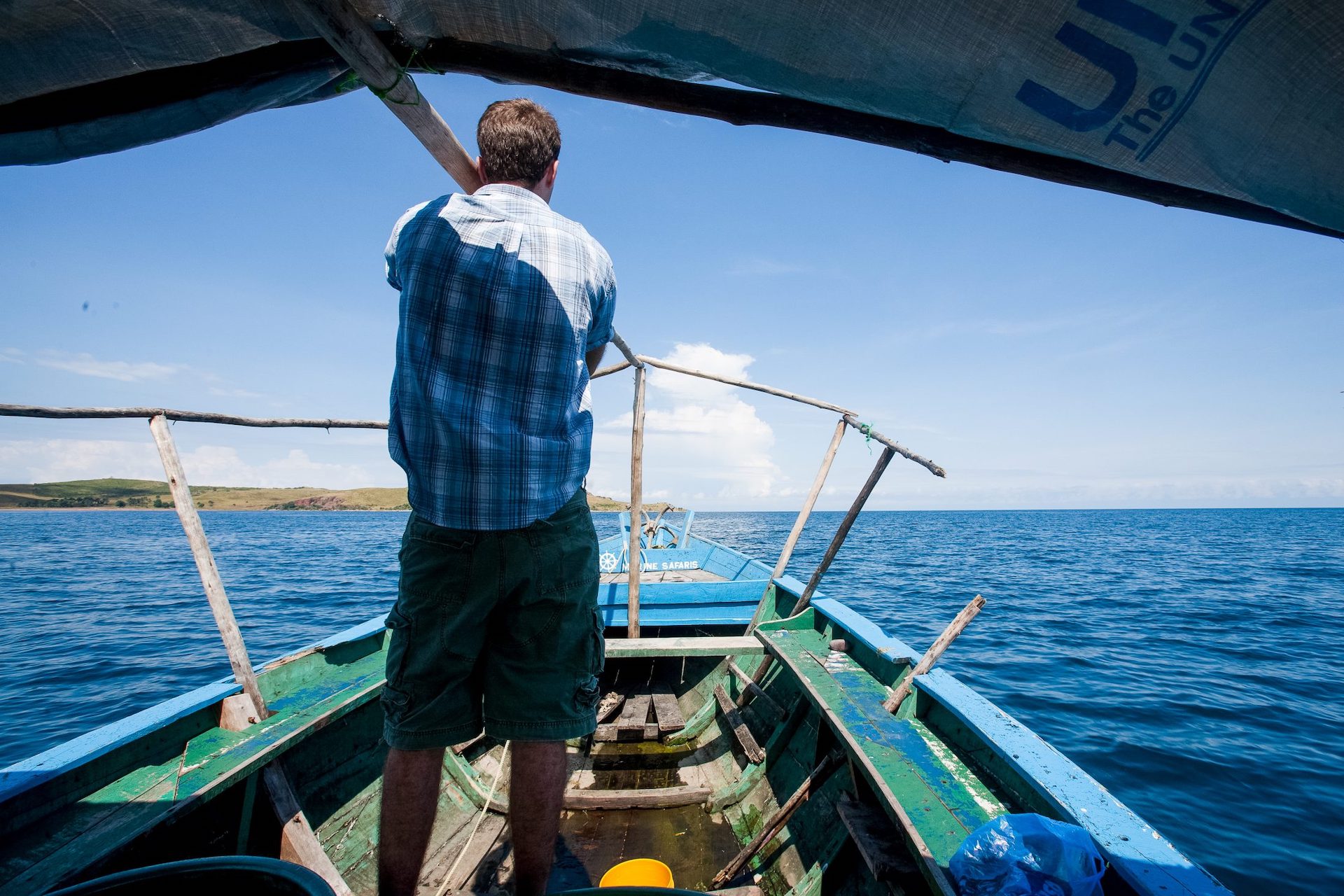
An IMB missionary takes a thirteen-hour boat ride across the historic Lake Tanganyika in Africa. Photo from IMB Photo Library.
Christian missionaries have used boats since the days of Paul. Boats remain an essential method of transportation among coastal peoples, refugees, and the peoples of the Amazon.
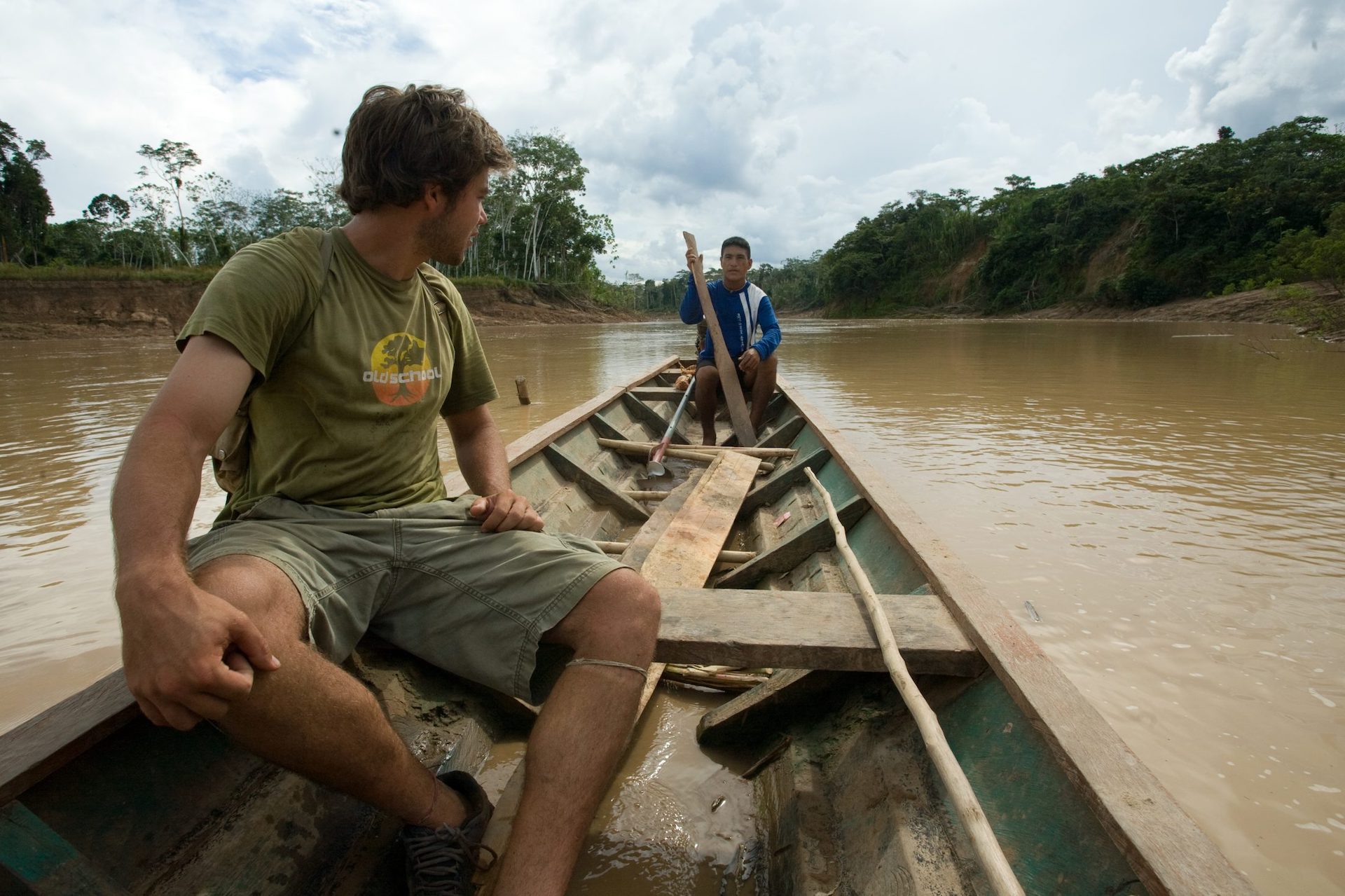
A missionary journeys by boat on the Amazon River to Peru and Ecuador. Photo from IMB Photo Library.
In the Amazon, riverboats facilitate trade and maintain communication between villages and cities. One journey can last three days; some last three weeks. Nevertheless, it “is the only mode of transportation to further the gospel,” said a missionary in Brazil.
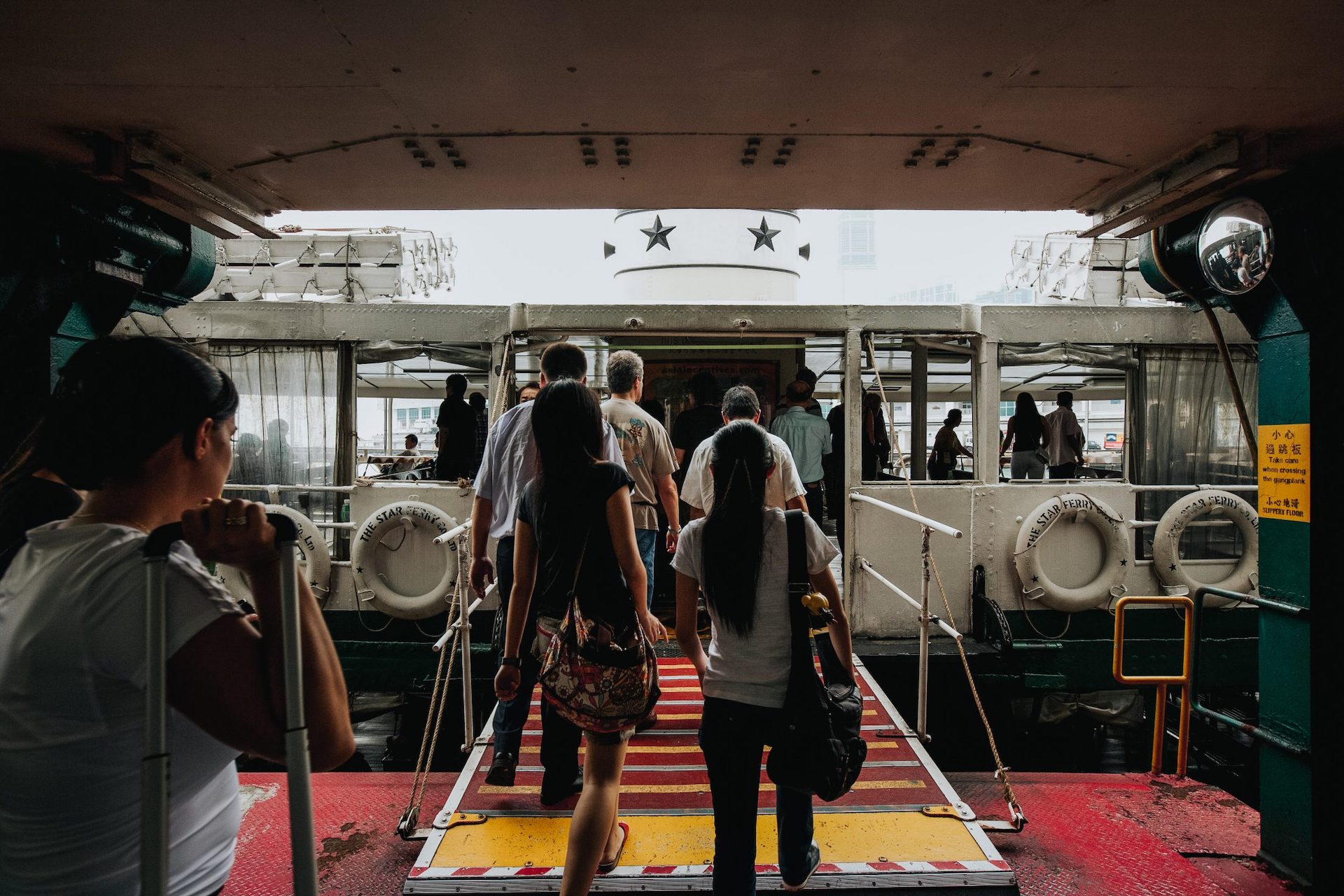
People in Hong Kong board the Star Ferry to journey across Victoria Harbor. Photo from IMB Photo Library.
These passengers board a ferry in East Asia. In many places, ferries extend the reach of public transportation, making more destinations accessible to missionaries who don’t own boats.
Metros
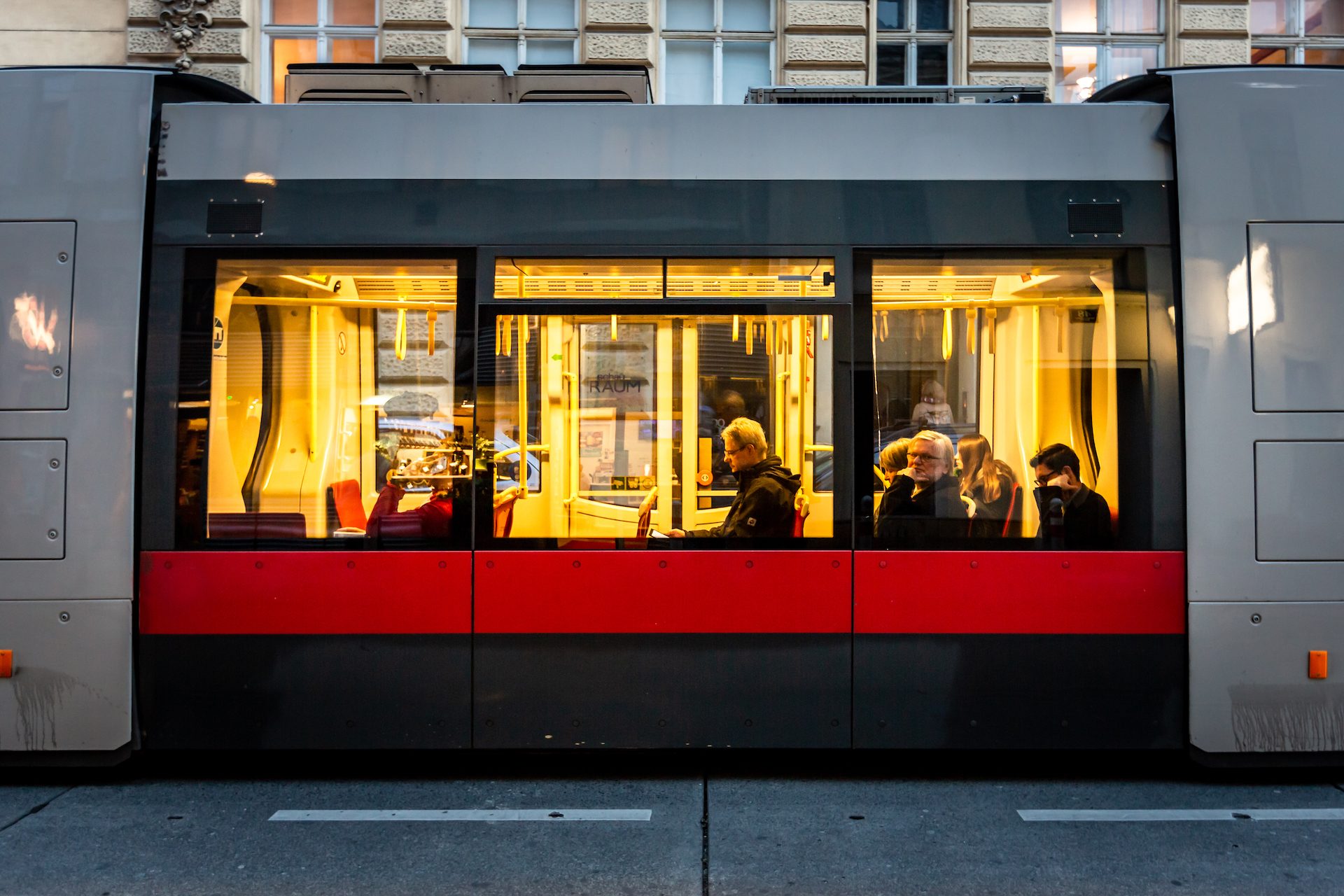
People in Vienna settle in for an evening commute on the city’s light rail. Photo by Patrick Royals.
Light rail is commonplace in commutes for missionaries in the world’s megacities. Metros such as the one above in Vienna were designed to make travel within a metropolitan context more efficient.
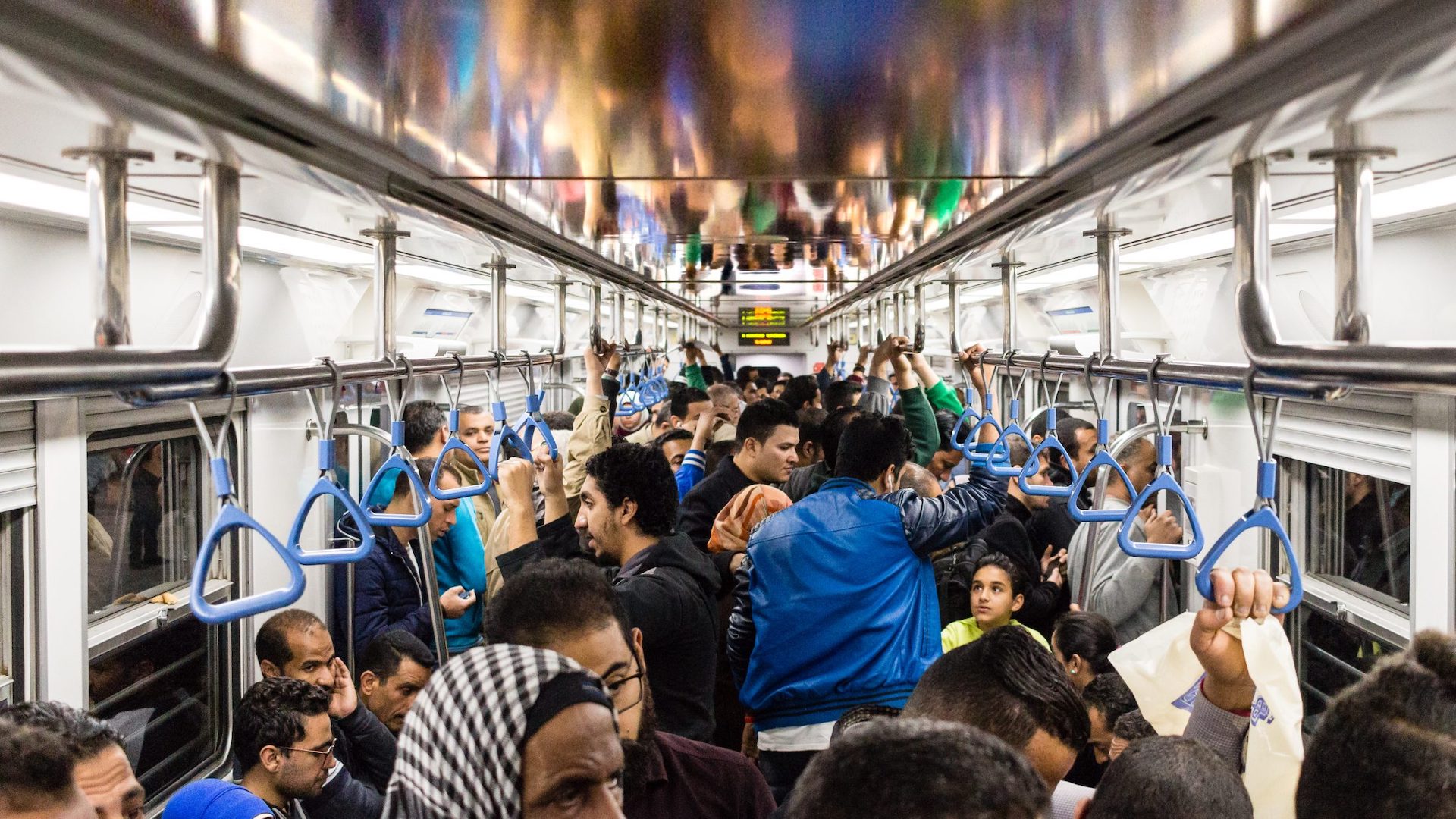
The Cairo Metro system sprawls across the city, delivering an estimated four million passengers per day over three different lines and nearly fifty miles of train track, both above ground and below. Photo from IMB Photo Library.
Metros, like this one in Egypt, are usually crowded, so riding the metro can be an exercise in letting go of personal space. New urbanites often learn metro skills such as “metro surfing”—riding the sway of the metro like a surfer rides a wave. “Sometimes,” one missionary said, “I just laugh along with a complete stranger, hands stuck to our sides, since there is nowhere else to go, and ride the ebb and flow of the metro car.”
Trains
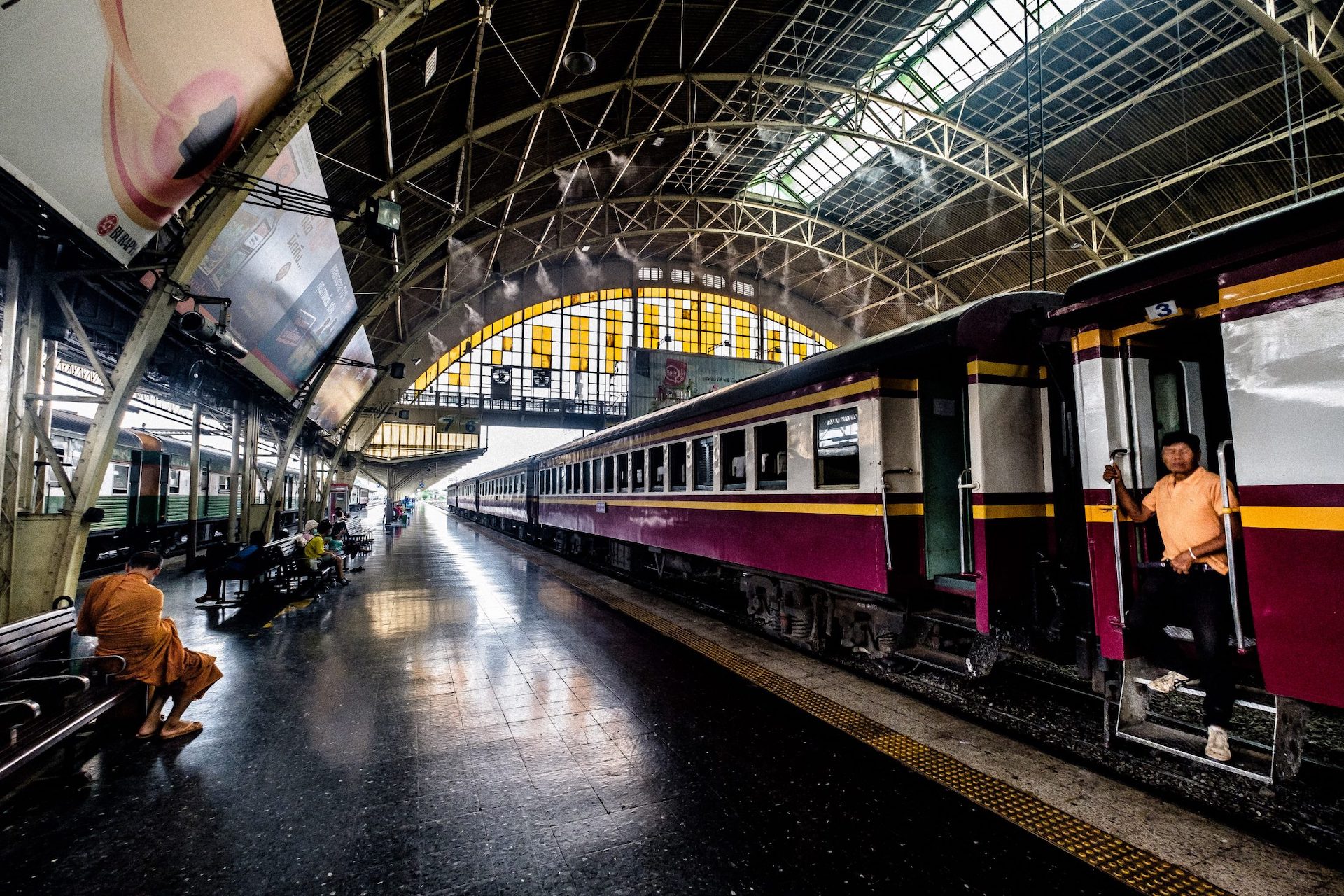
A Buddhist monk waits to board at the Hua Lomphong Railway Station in Bangkok, Thailand.
In some locations, people spend days on the train to reach their destination. As missionaries roll across the countryside, children play with newfound friends, people swap stories, and the conductor sells ice cream.
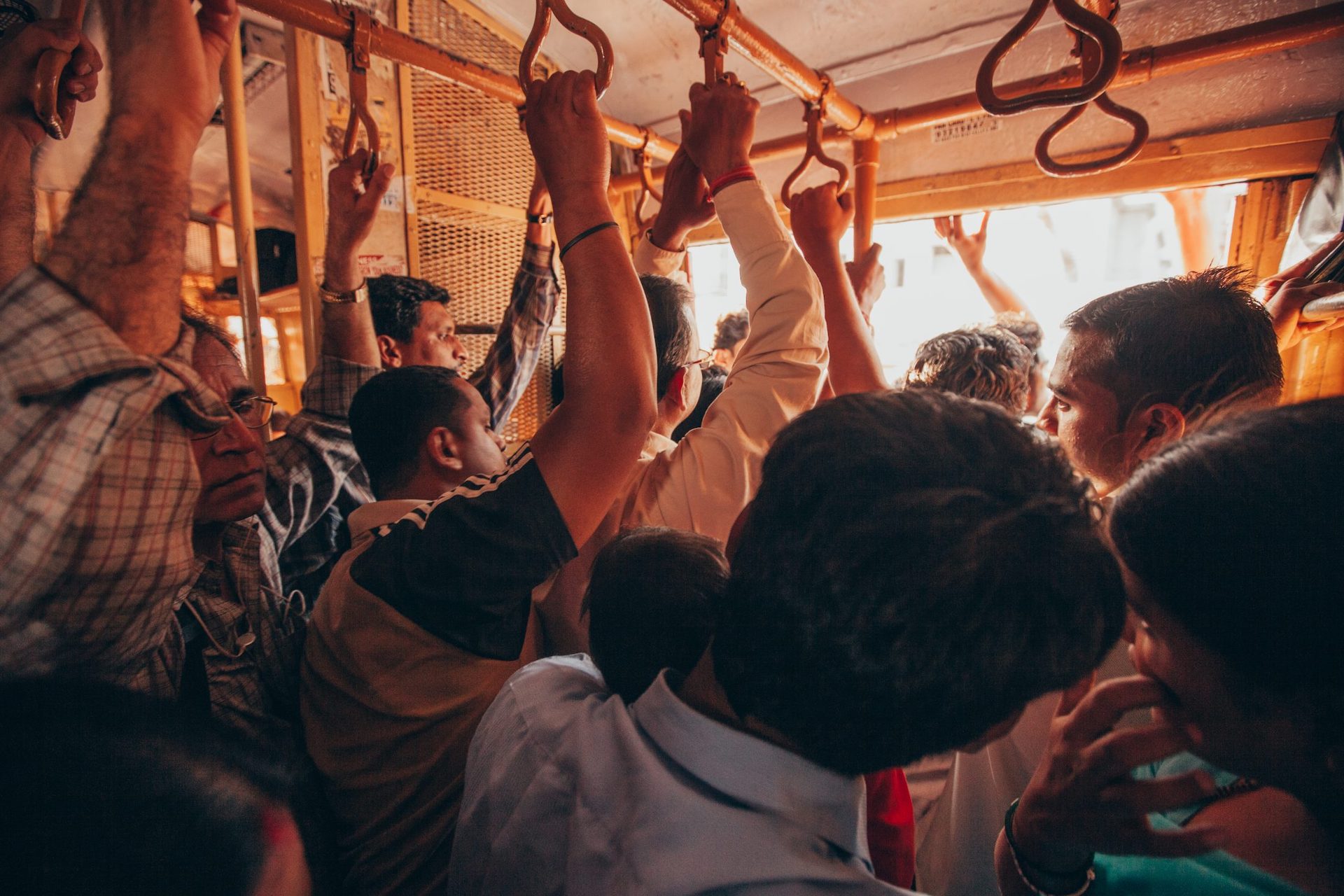
Passengers ride the train into the city of Mumbai, India. Photo from IMB Photo Library.
Brought during British colonization, the railroad is one of India’s most efficient modes of transportation. However, because railcars are often overfull, passengers have been hurt or even smothered.
Cars
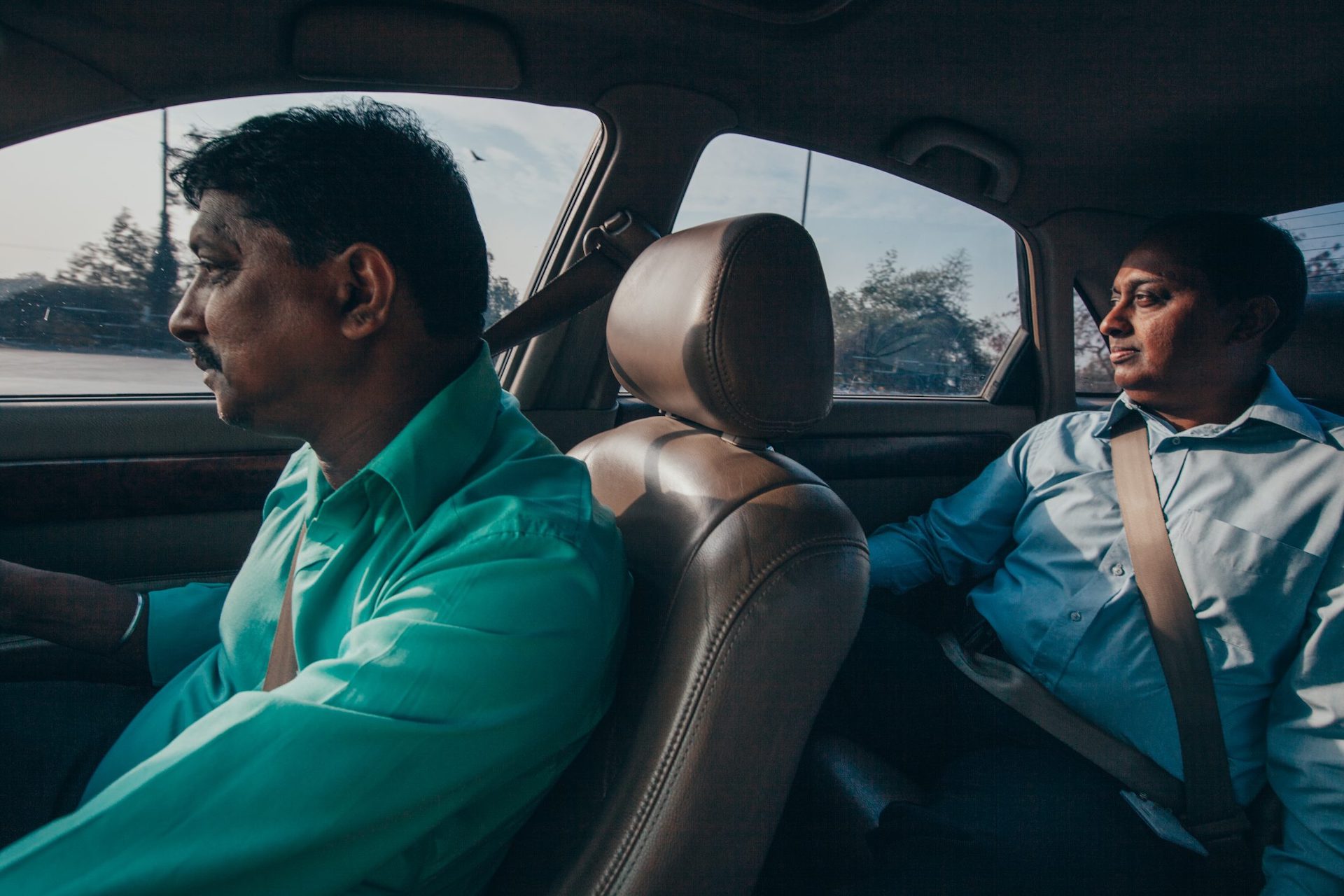
It’s common in India for businessmen, like this one in Mumbai, to have personal drivers to transport them to and from the office. Photo from IMB Photo Library.
Cars are popular among the middle and upper class in South Asia. Here, this man drives on the left side of the road—a new skill that some missionaries must master.
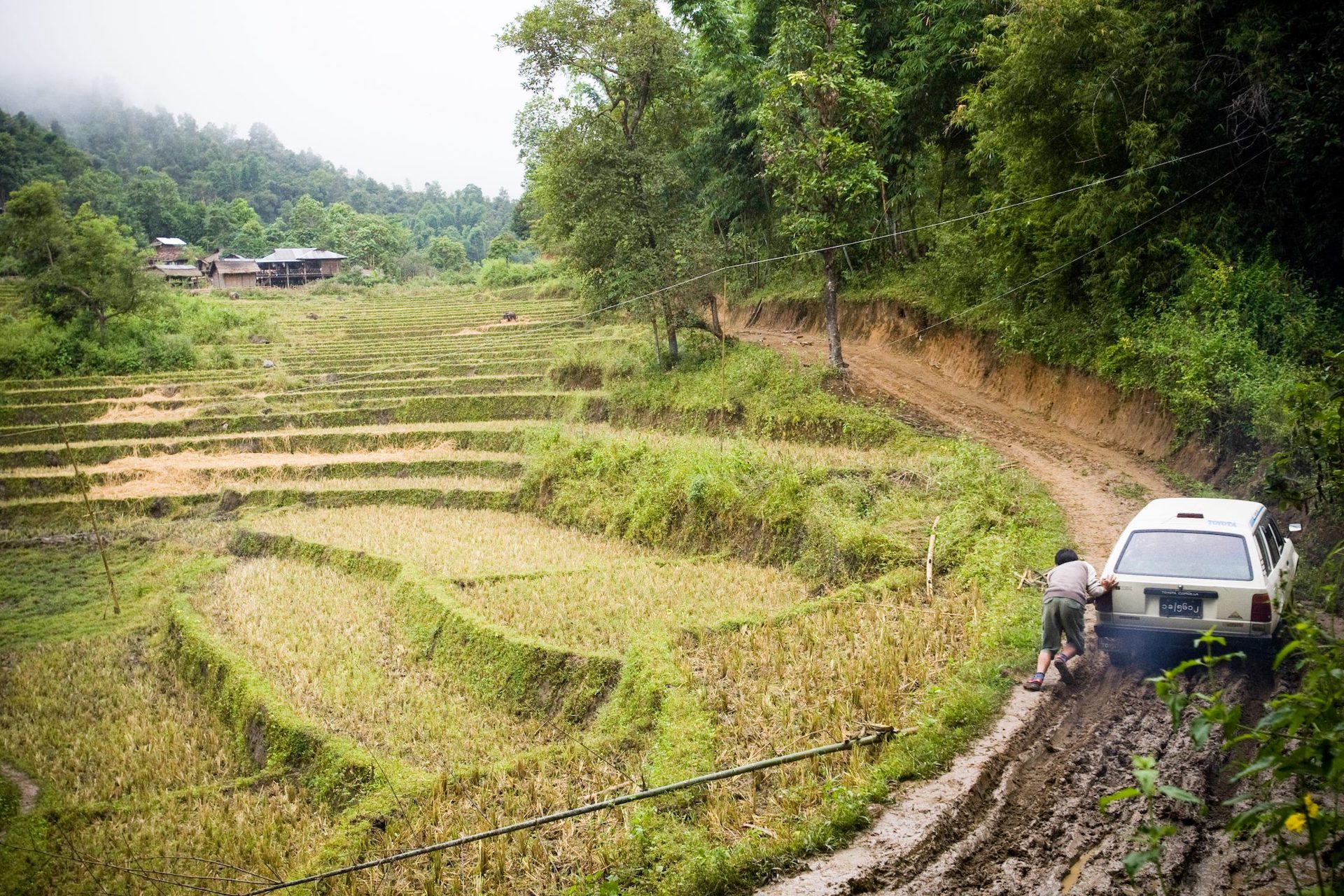
A guide helps push a car through mud during the rainy season in eastern Myanmar. Photo from IMB Photo Library.
In Malaysia, roads are marred by potholes and ruts, and they’re even more treacherous during monsoon season. “Some villages are completely inaccessible for months at a time without a four-wheel drive vehicle,” said a missionary in Southeast Asia.
Buses
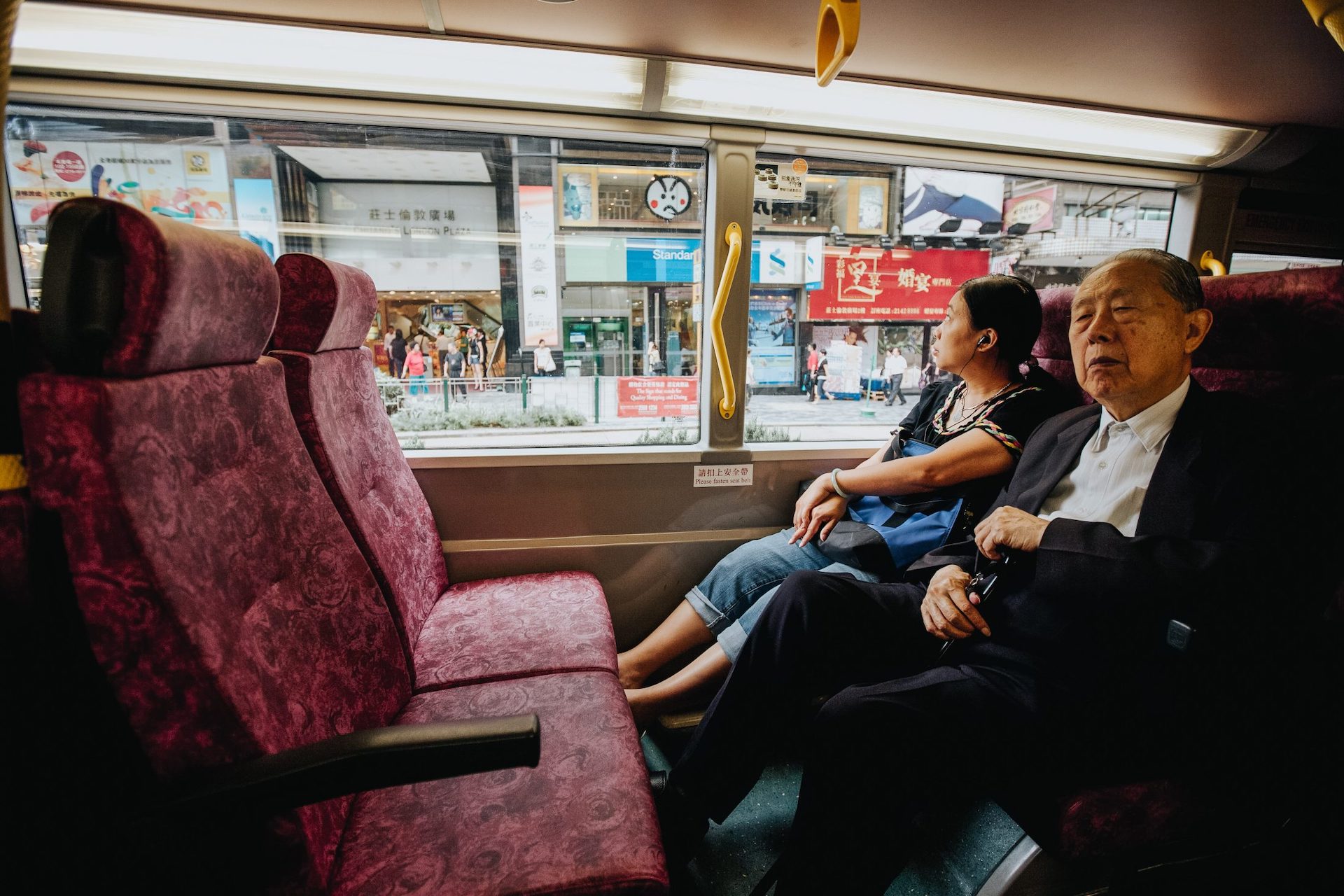
Many Hong Kong locals choose to use the intricate bus system, but it can be quite difficult for travelers unfamiliar with the system’s many routes. Photo from IMB Photo Library.
Until recently, owning a car was too expensive for most East Asians. For the lower and middle classes, buses are affordable and accessible. Even now, though the middle class has begun to buy cars, existing infrastructure does not allow for the increase in traffic.
Matatus
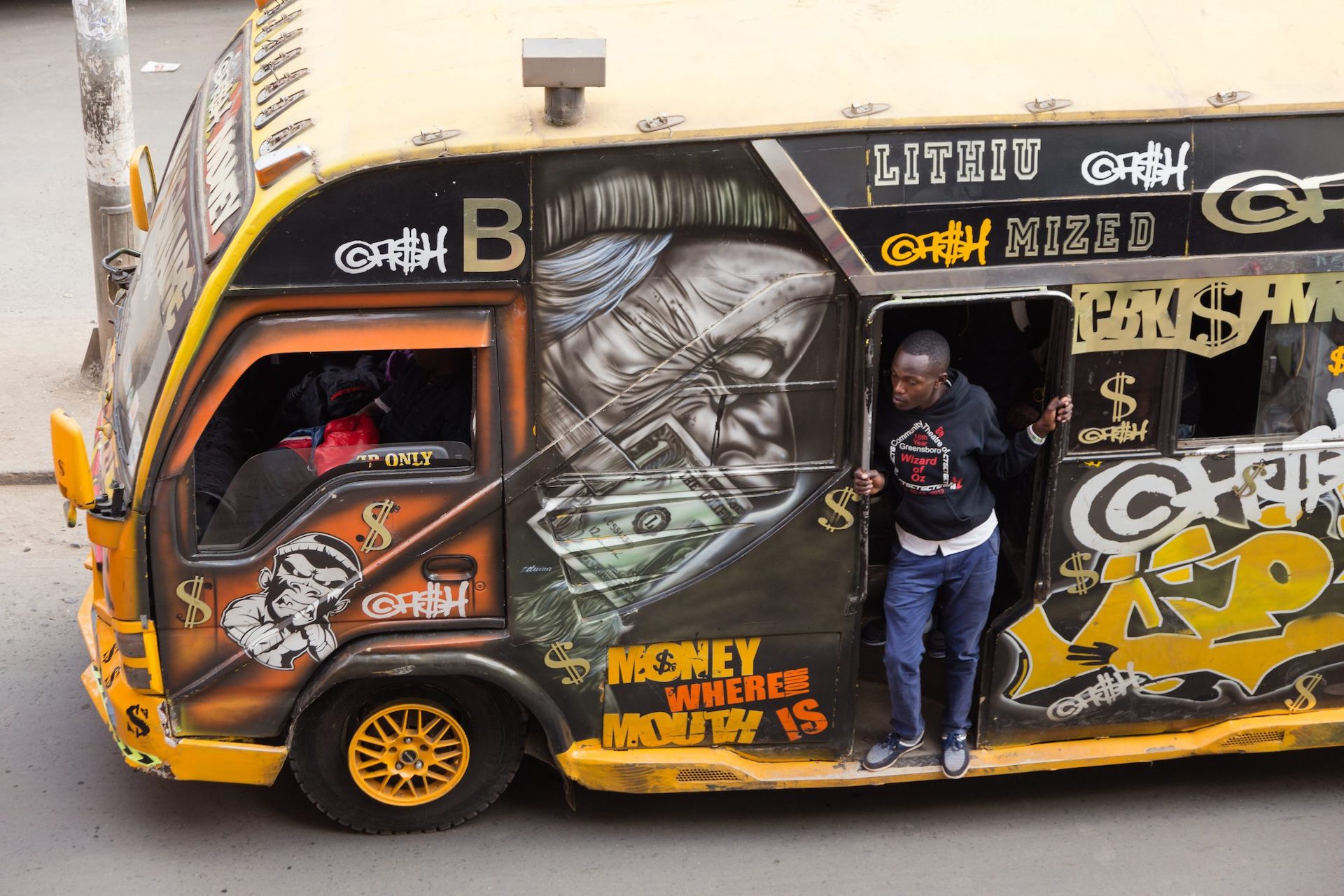
A busy intersection in downtown Nairobi, Kenya, is full of elaborately decorated matatus taking passengers in and out of the bustling business district. Photo from IMB Photo Library.
In Kenya, matatus are brightly colored buses or vans operated by private owners, or saccos. The price is fixed, so saccos advertise their rides with unique decorations. A missionary in Kenya once saw a matatu with John Elway’s picture on the wall—a tribute to the 1980’s Denver Broncos. A wild matatu ride is “definitely a cultural experience,” he said.
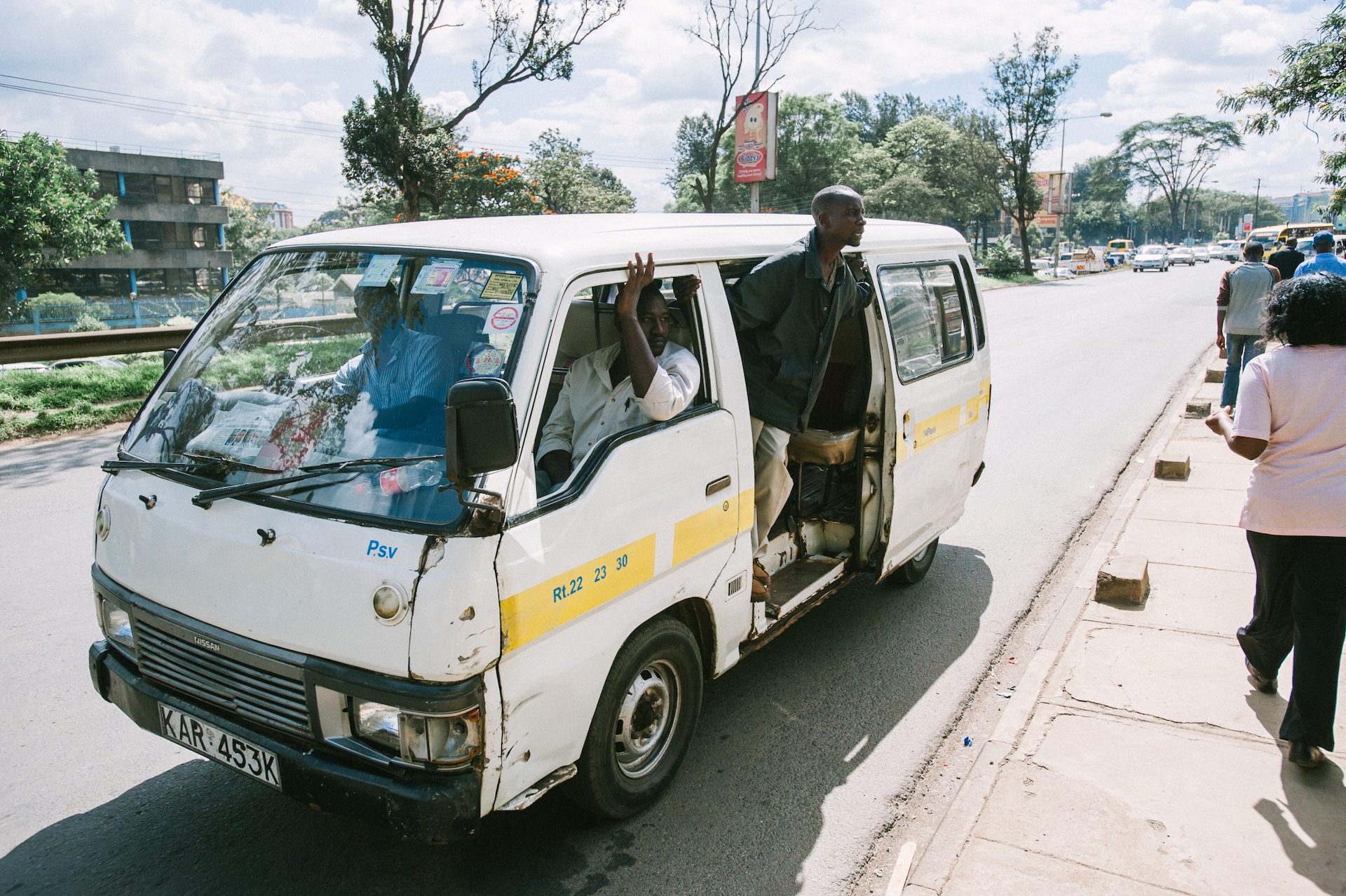
Matatus are called trotros in Ghana and are said to be not as crowded (limited to fourteen people, theoretically) or as dangerous as they use to be. Photo from IMB Photo Library.
In Ghana, twelve- to twenty-four passenger vans are called trotros. These long bus rides in close quarters, a missionary in West Africa explained, can be great times for sharing the gospel.
Trucks
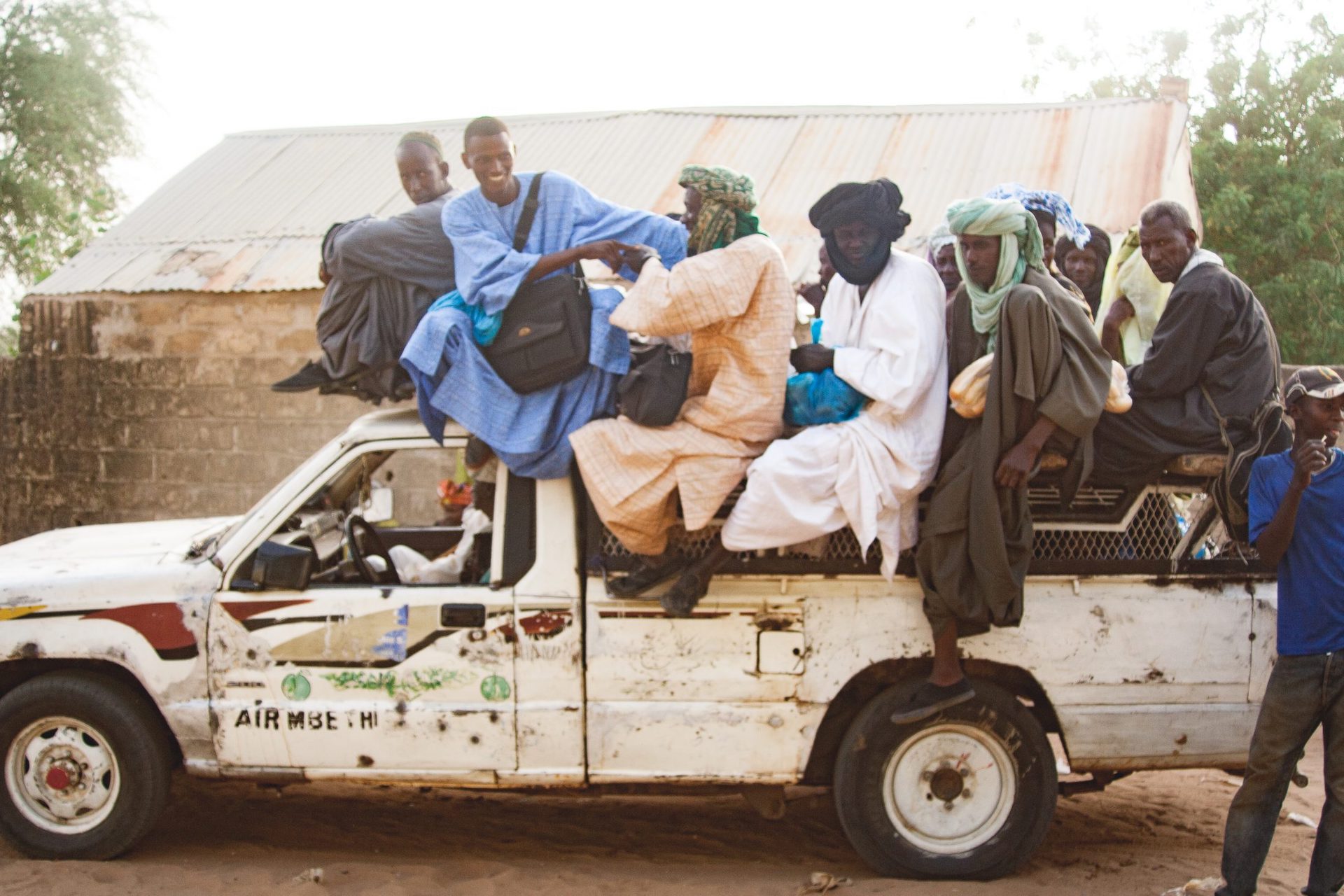
Photo from IMB Photo Library.
Passengers perch on a truck in Sub-Saharan Africa (above) or lounge, rumbling down a North African road (below). Some missionaries serve where seatbelts are only a formality, and riding in the back of a truck with fourteen of your closest friends is an acceptable mode of transportation.
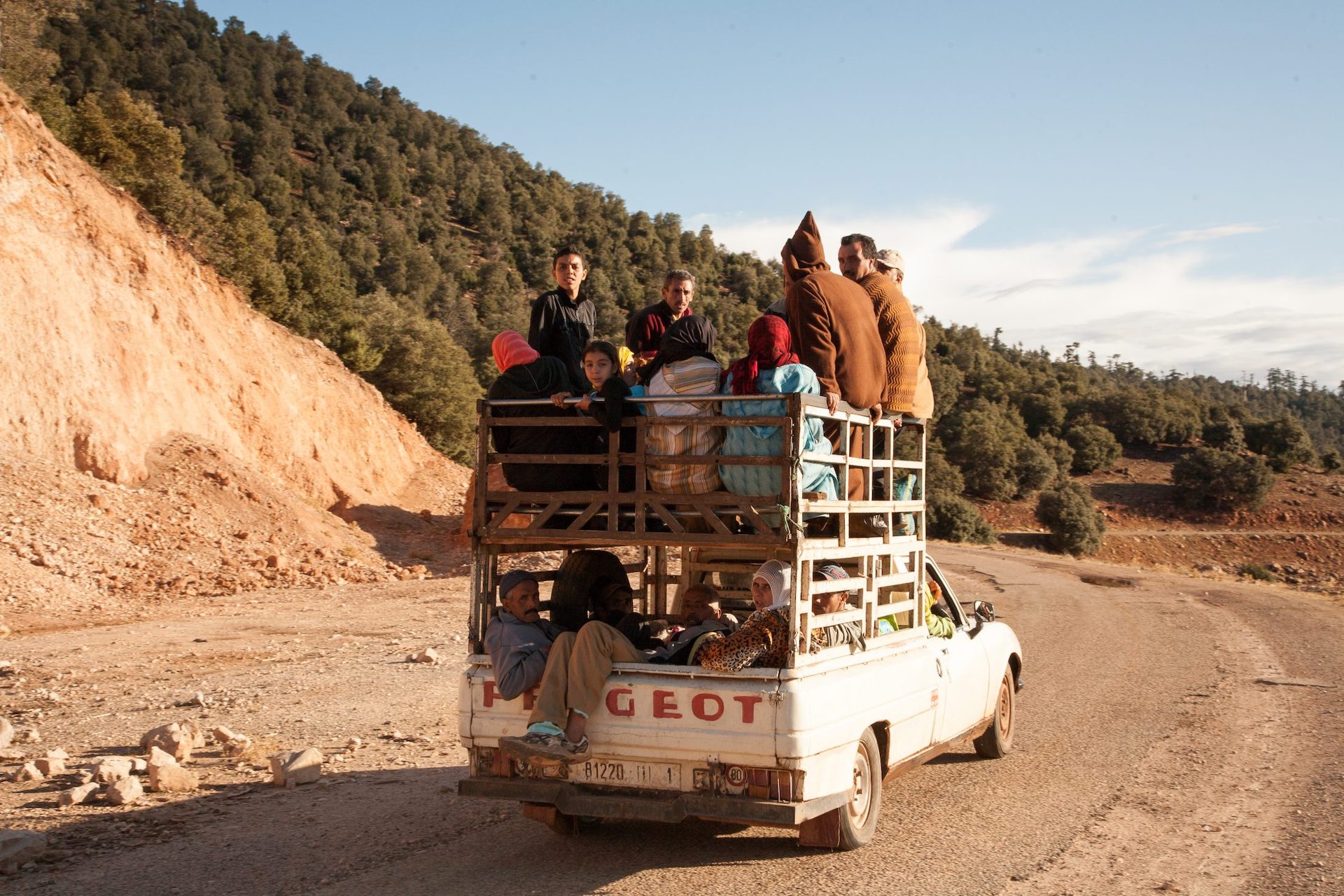
Motorbikes
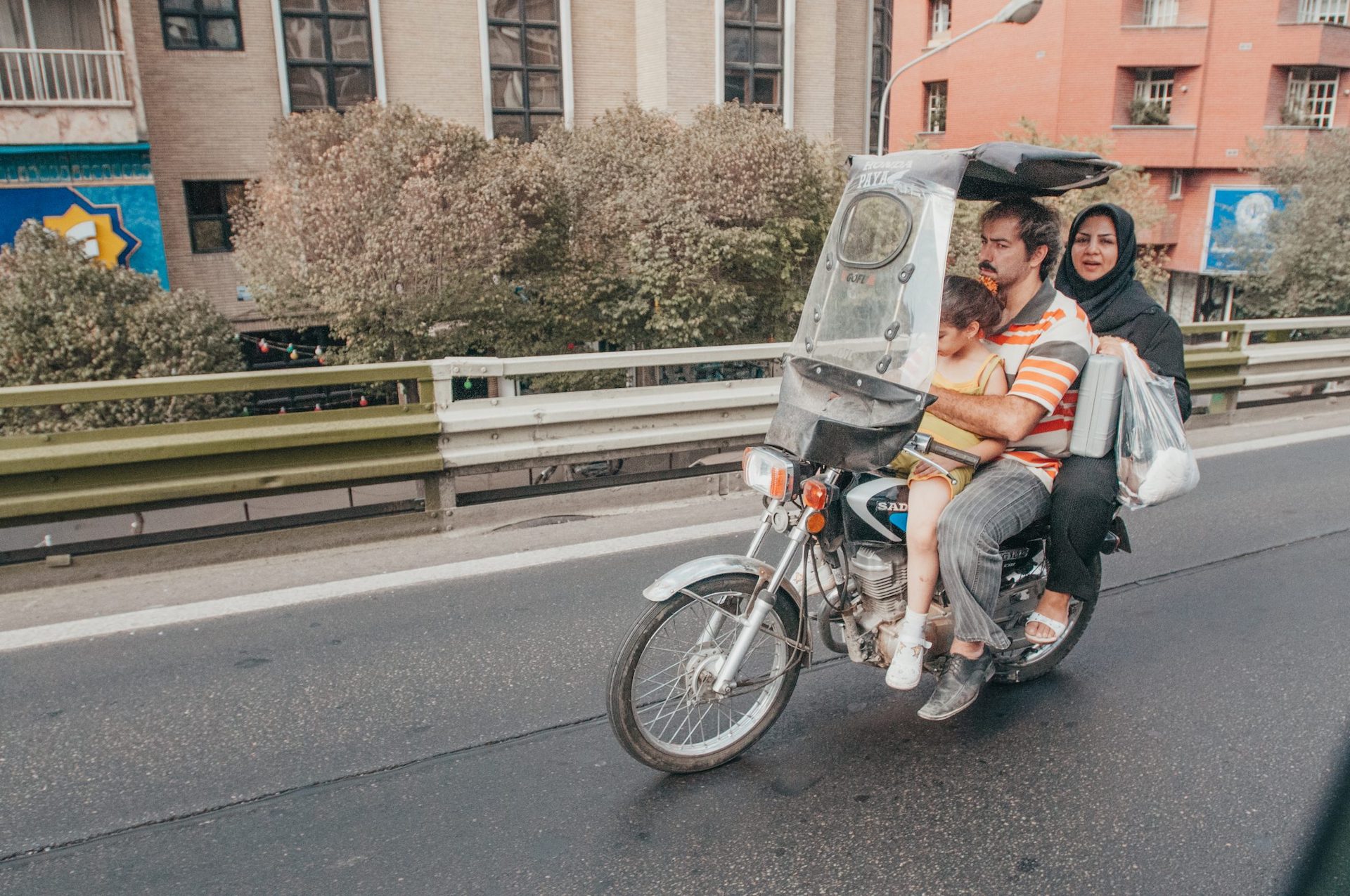
A family rides a motorcycle on a street in Tehran, Iran. Photo from IMB Photo Library.
Motorbikes are a versatile and inexpensive means of transportation. According to a worker in South Asia, motorbike drivers “go anywhere on the road they want: sidewalks, ditches, in between cars.”
A worker in Southeast Asia confessed, “Seeing multiple people on a scooter at once always makes me smile. Although, [the bikes] are very dangerous. You learn to pray a lot when you drive in Asia.”
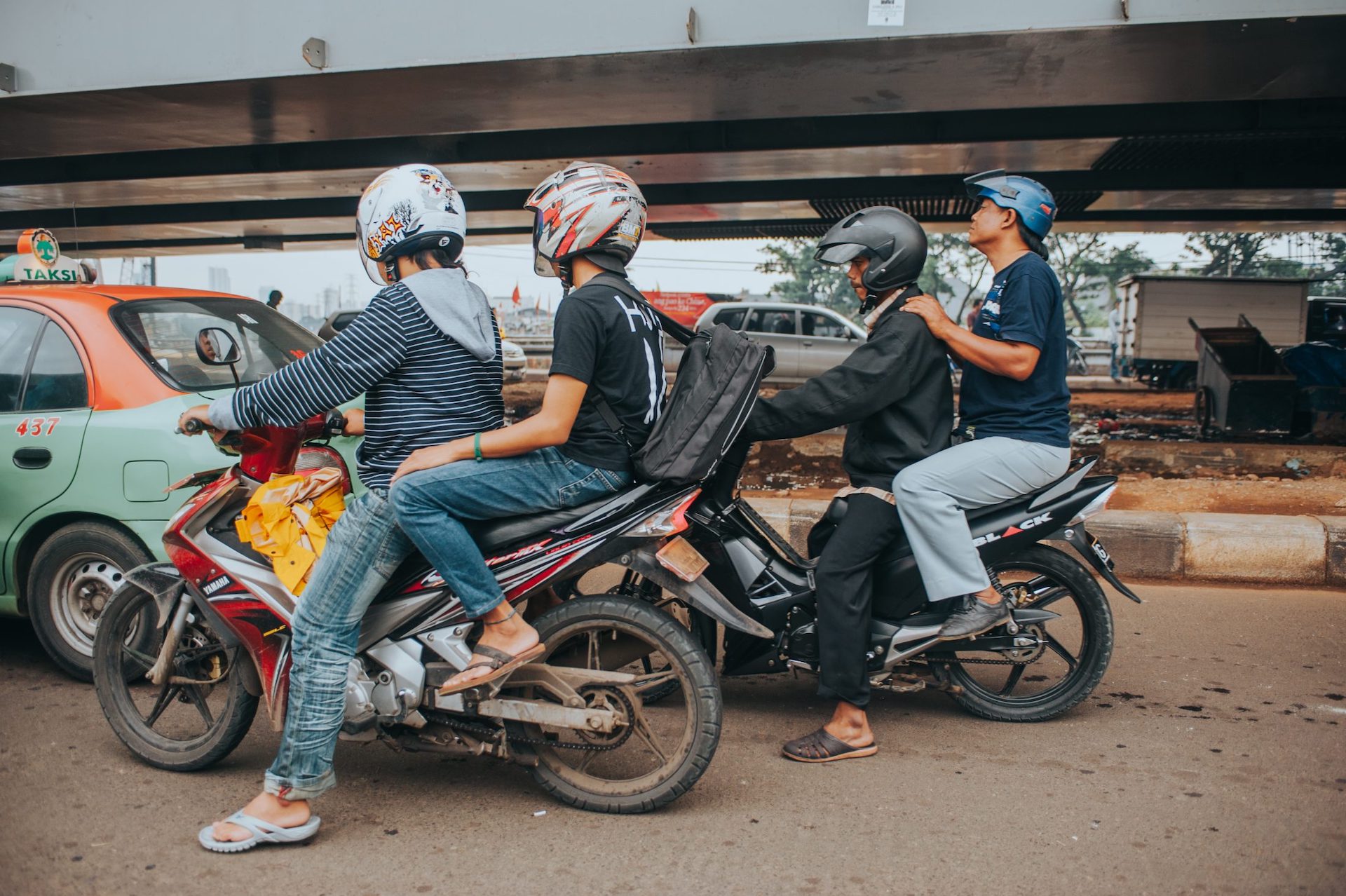
It’s estimated there are fifteen million motorbikes in Jakarta, Indonesia, compared to a mere five million cars. Photo from IMB Photo Library.
Driving a motorbike involves interacting with an ever-changing flow of traffic. One missionary recalls driving on a one-way street when another motorbike carrying fresh poultry came from the opposite direction, causing a crash and hurling thirty dead chickens into the air.
Bicycles
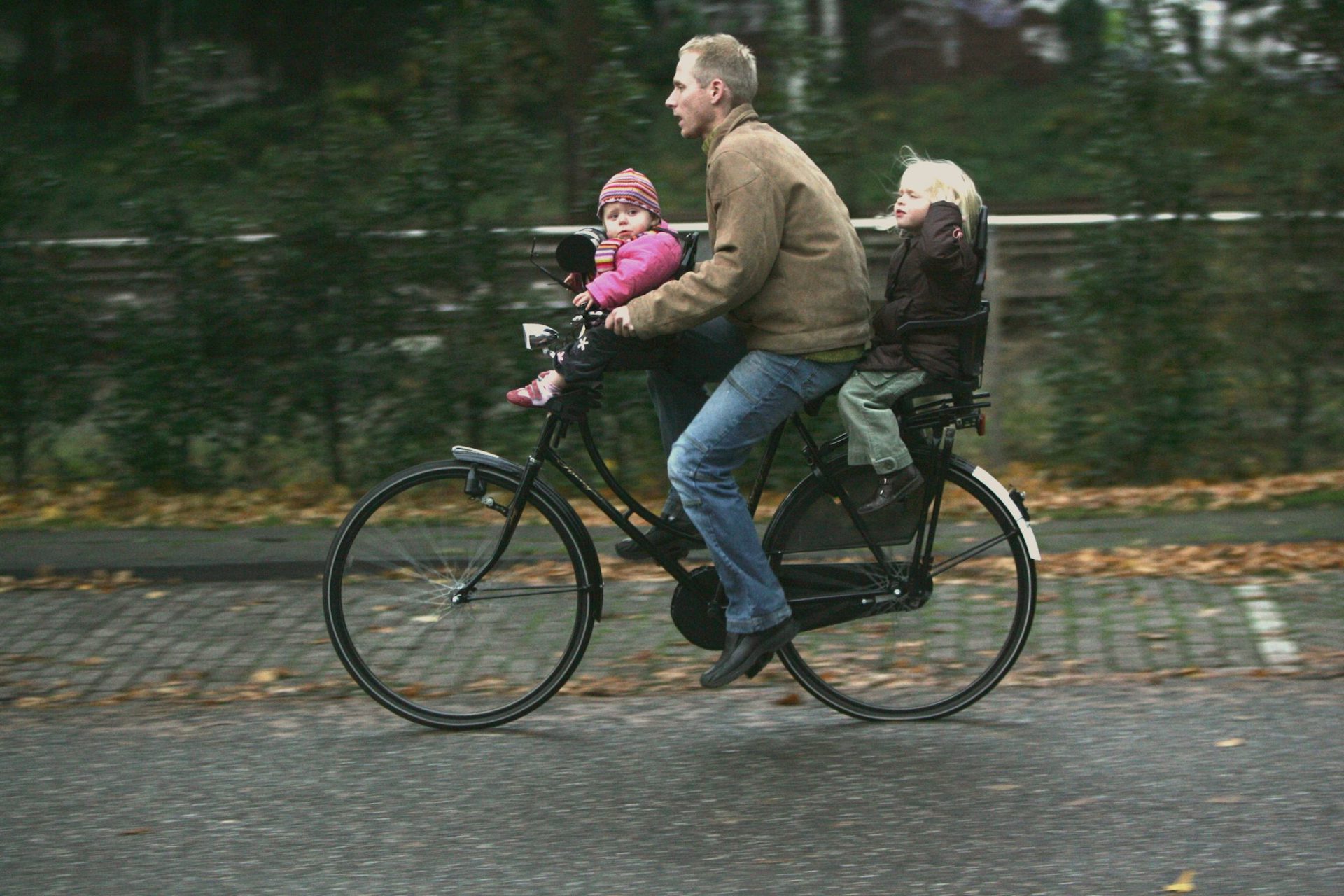
A father rides a bicycle with his two daughters through the streets of Amsterdam. Photo from IMB Photo Library.
Missionaries often have the opportunity to learn to balance groceries and/or kids as they ride through some of the foremost biking cities in the world.
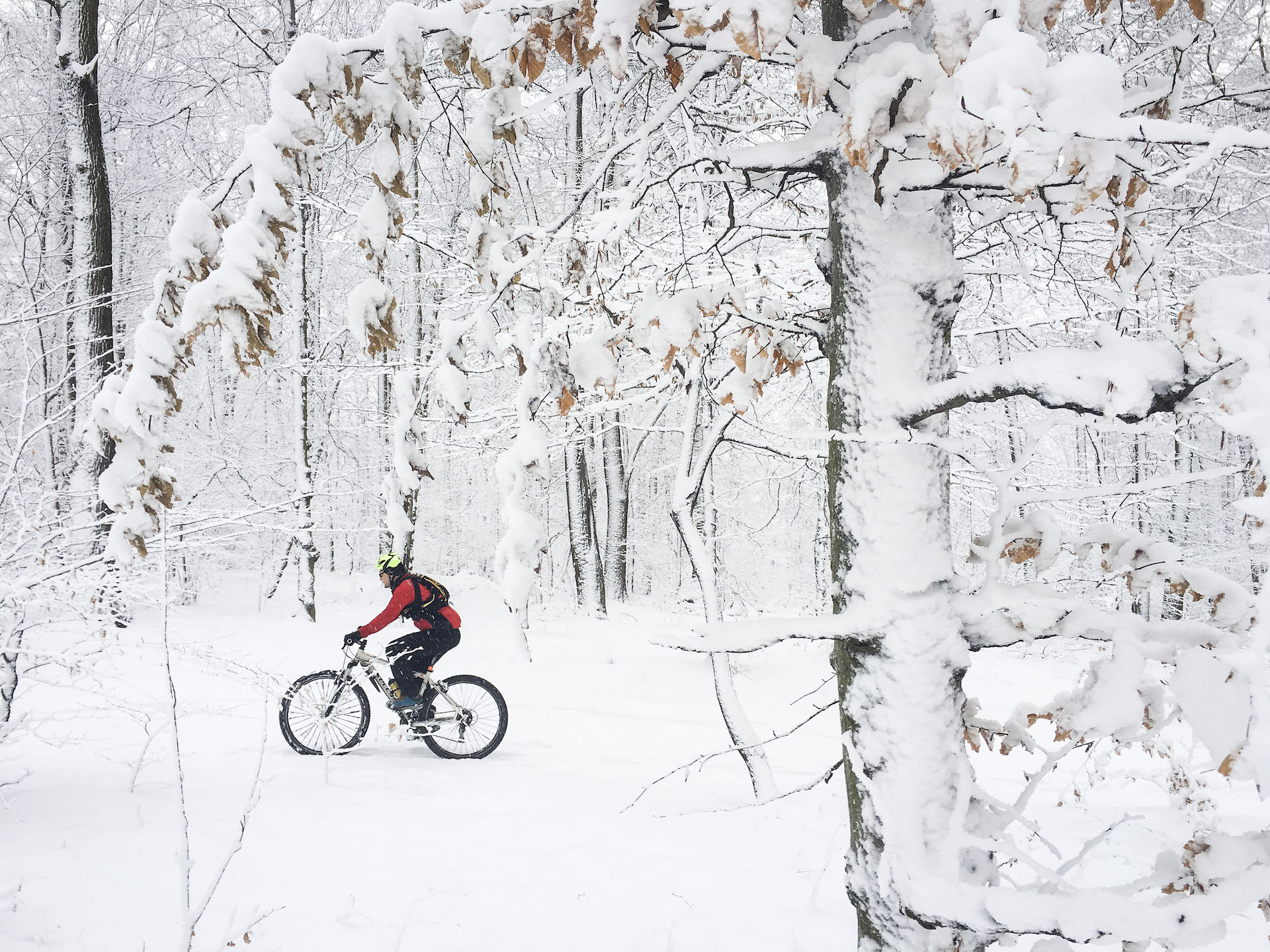
A cyclist in Krakow, Poland, braves a cold January afternoon during his trek through a forest. Photo by Kelvin Johnson.
Europeans see biking as a way to be environmentally conscious, to maintain a healthy lifestyle, and to save money. Missionaries in Europe say that as a result of biking, they’ve had conversations with other cyclists, and “there has almost always been a chance to talk about our faith.”
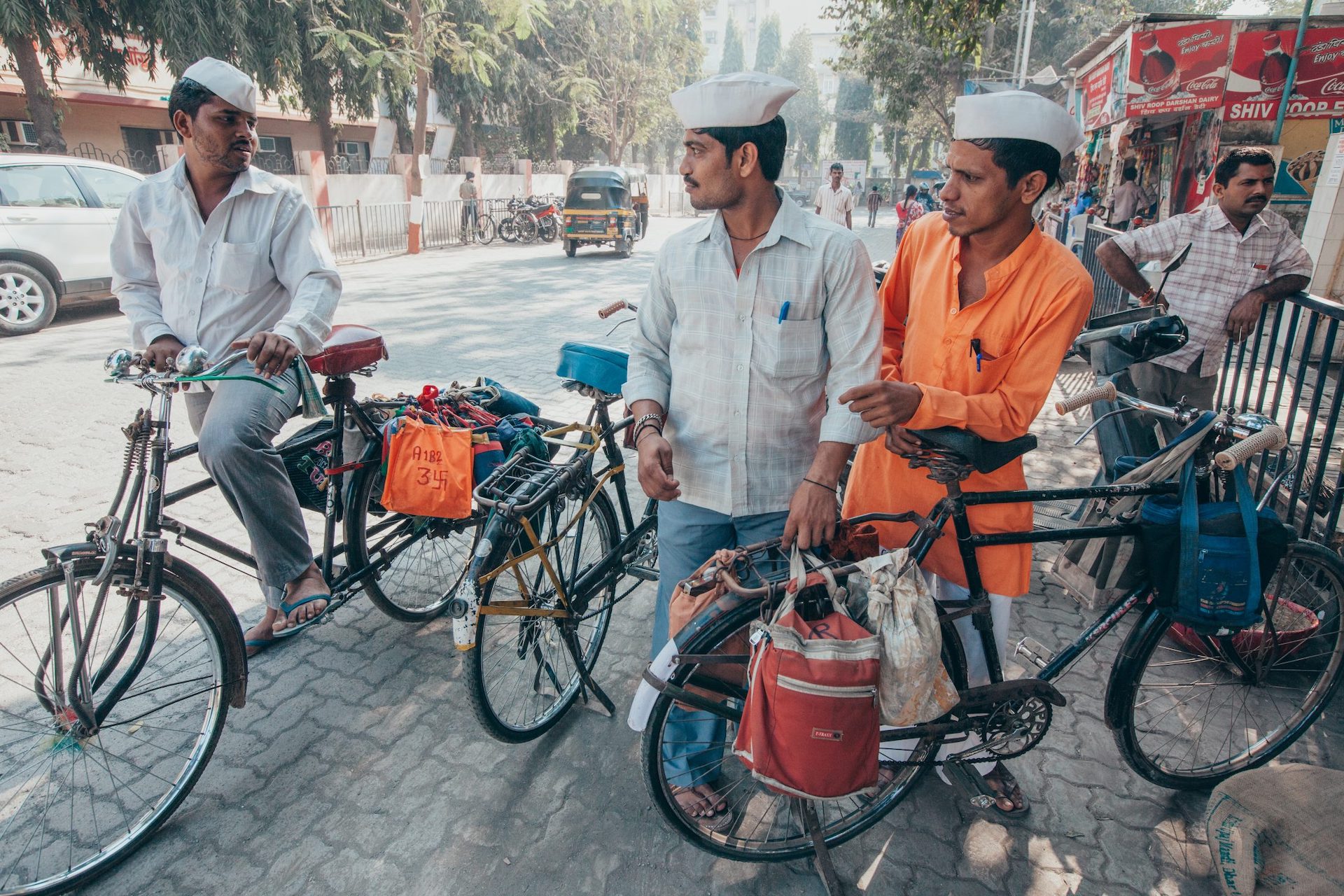
In Mumbai, India, you can find dabbawalas transporting meals via bicycle for breakfast, lunch, and dinner. Photo from IMB Photo Library.
These dabbawalas in Mumbai, India, use bicycles to distribute dabbas, or “lunchboxes.” For some dabbawalas, transporting food is a spiritual journey rooted in Hinduism.
Rickshaws
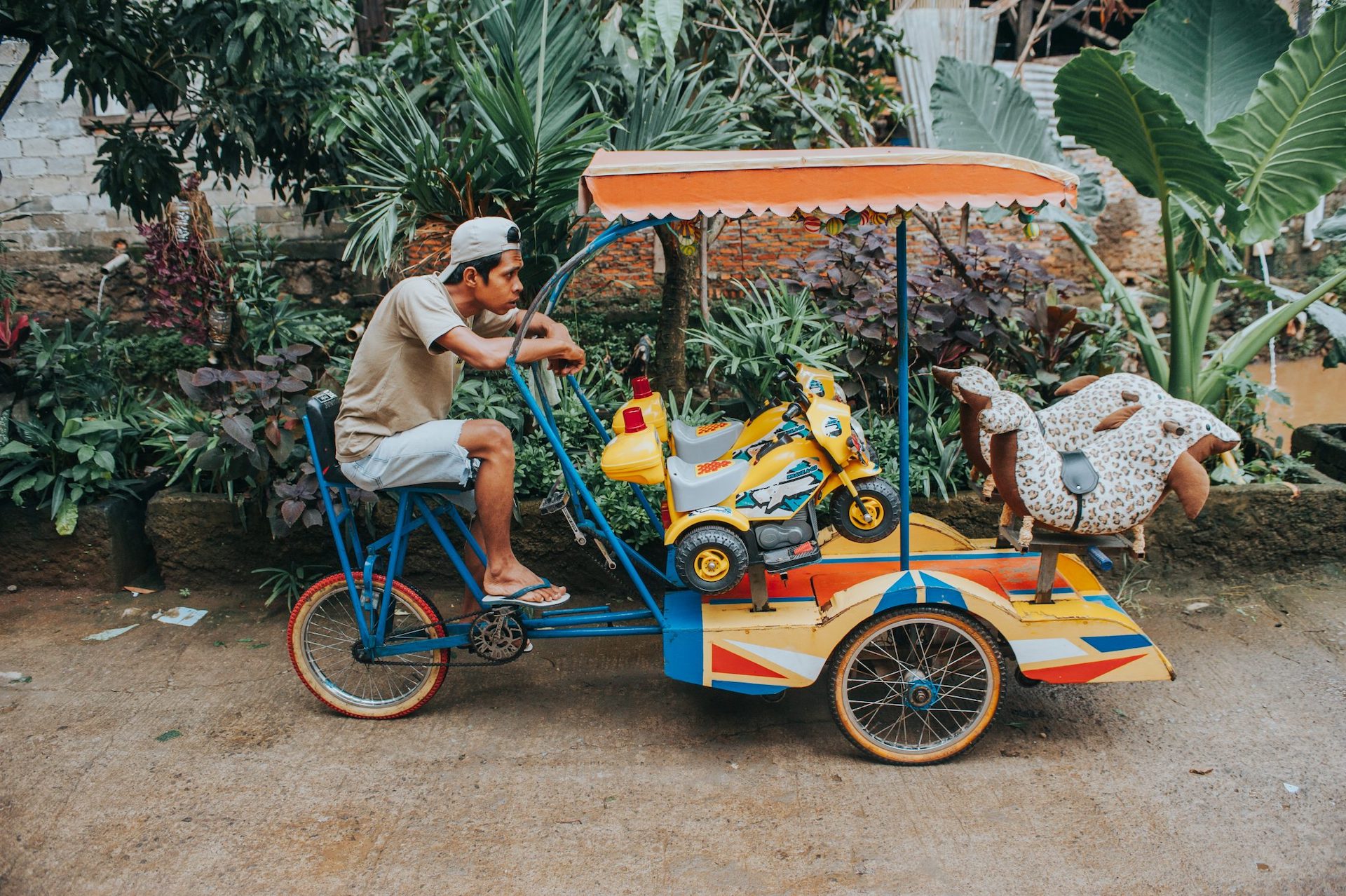
A rickshaw driver in Jakarta, Indonesia, waits for his next customer. Photo from IMB Photo Library.
While this rickshaw seems to have been designed for children, it’s simply a tricycle made to carry passengers of any age. One missionary recalls the day he tested out the quality of seat padding in several rickshaws. Within no time, all of the rickshaw drivers were trying to convince him that their rickshaw had the best seat padding.
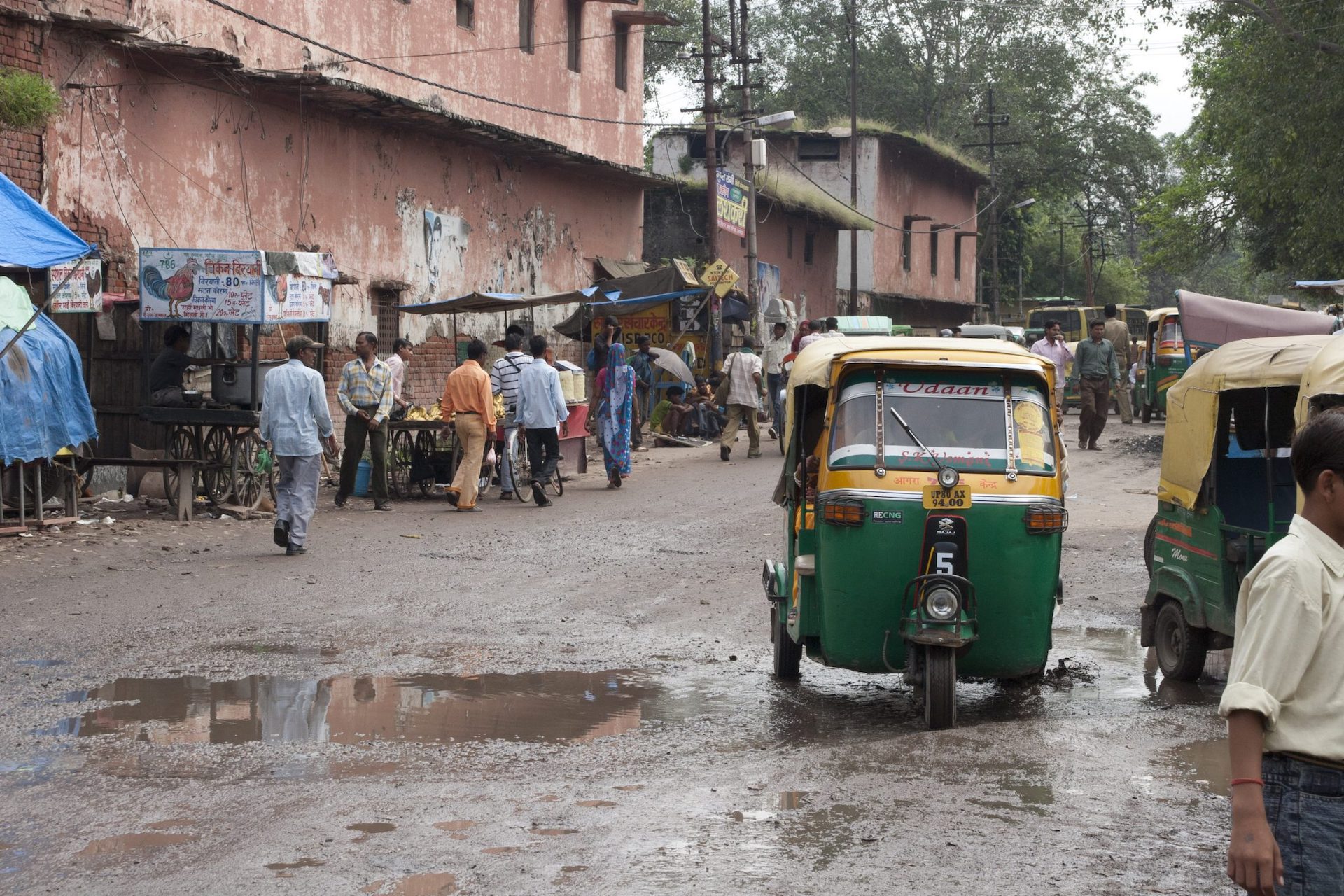
An auto rickshaw navigates the muddy streets of India during rainy season. Photo from IMB Photo Library.
Rickshaws, which are called “autos” in South Asia, are motorbikes within a metal shell. Autos are the taxis of South Asia, and missionaries have found that while auto drivers wait for customers, they’re often open to conversation.
Animals
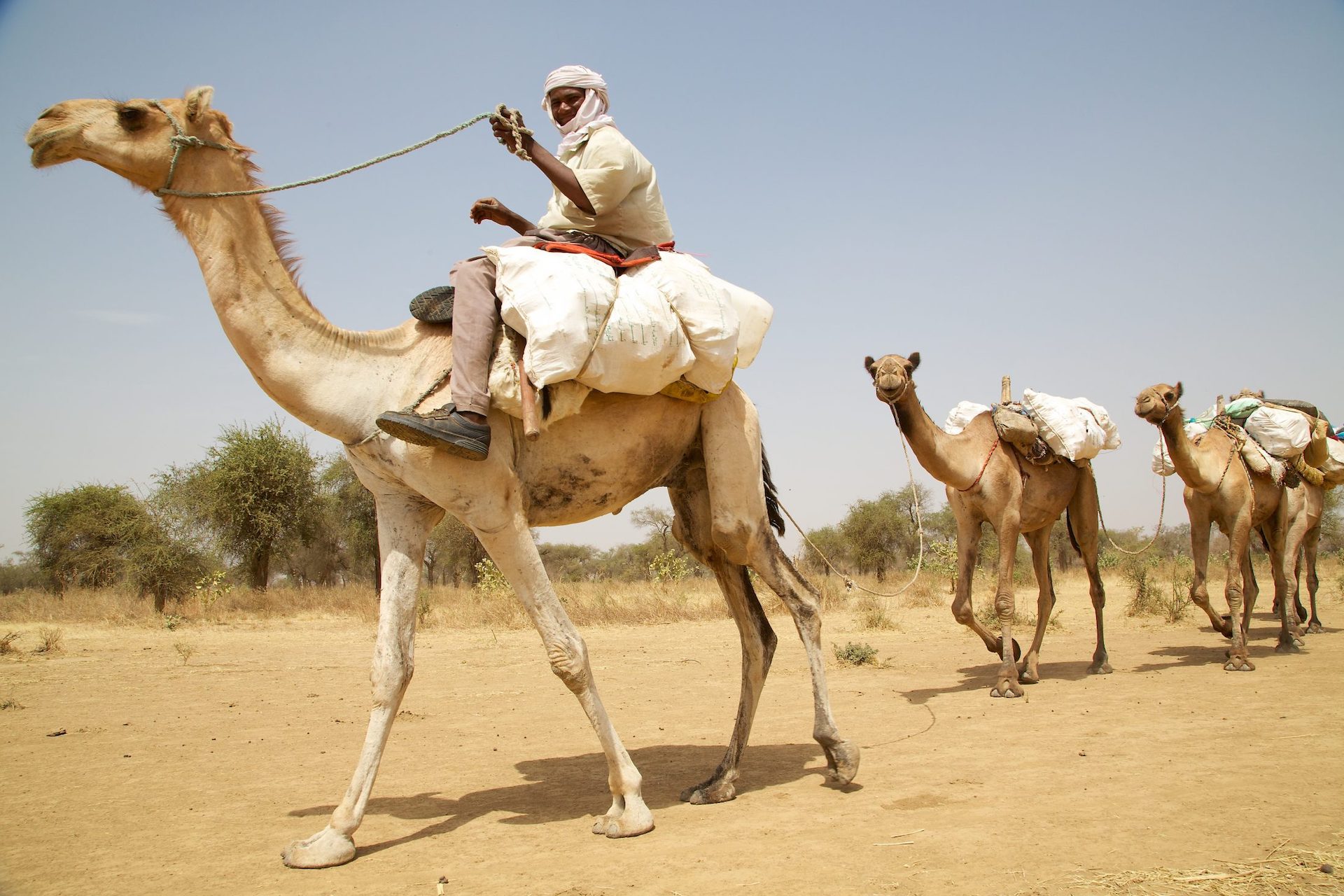
This man in Chad uses camels as a main form of transportation. Photo from IMB Photo Library.
Some missionaries work with peoples who use more lively (and ornery) forms of transport, like donkeys or camels. Camels were created to survive with little water and food, making them a great choice in rugged, dry terrain, even if they do spit sometimes.
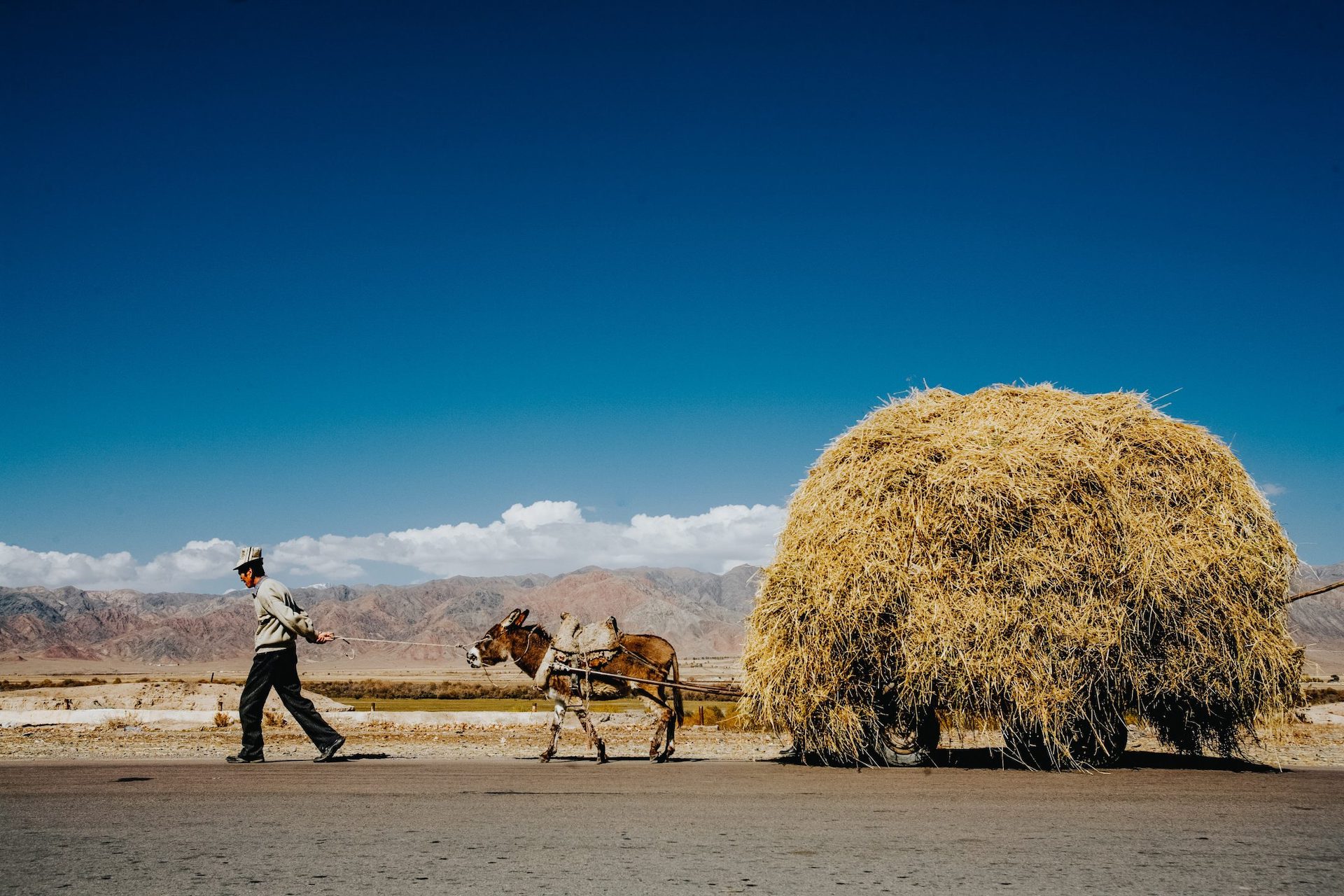
A man guides his donkey pulling a load of hay in Kyrgyzstan. Photo from IMB Photo Library.
Donkey carts, like this one in Central Asia, can still be found in the villages of Sub-Saharan Africa, Central Asia, and Europe.
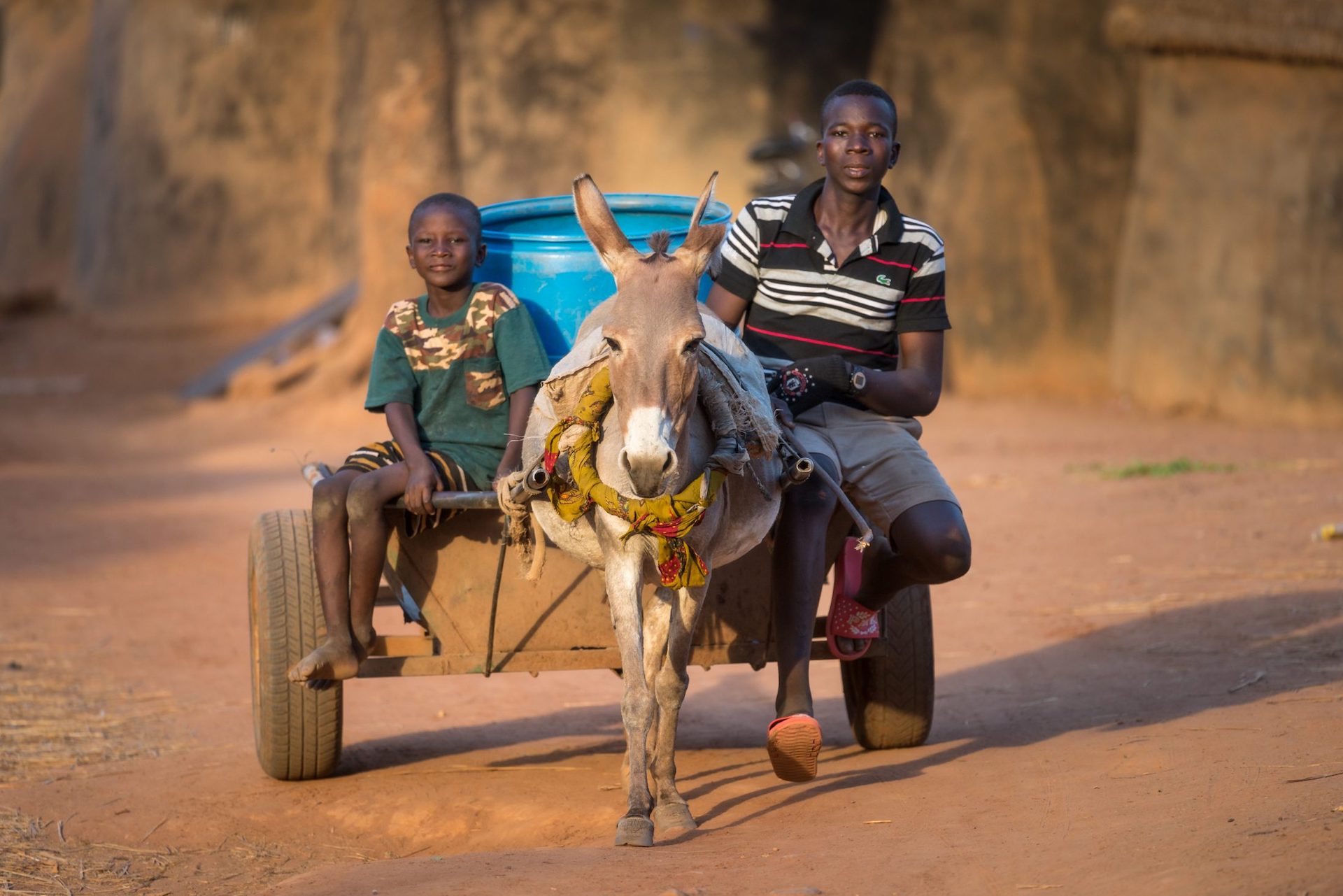
Boys ride on a donkey cart to draw water from a well. Most houses in Northern Ghana do not have running water, and people rely on wells for clean water. Photo from IMB Photo Library.
Donkey carts can roll along dirt roads riddled with ruts. “It’s not very comfy riding in the cart,” a missionary admitted, “but that’s probably due to the poor engineering of the cart, not the donkey’s fault.”
All of us encounter people in our daily routines, whether we travel in first class or on camelback. We see that Jesus also met people along the road: his disciples on the way to Emmaus, the Samaritan woman, and the apostle Paul. May we pray expectantly that God will place people in the seat next to us, so that they, too, will encounter Jesus along the road.
“Whenever I have prayed that prayer honestly in South Asia or elsewhere,” a missionary said, “I cannot think of a time when it was not answered.”
Lucy Campbell is a Journeyman serving in Eastern Europe. Some of her favorite memories on the field have been trying out new forms of transportation.

